#Napoleon wrasse
Text
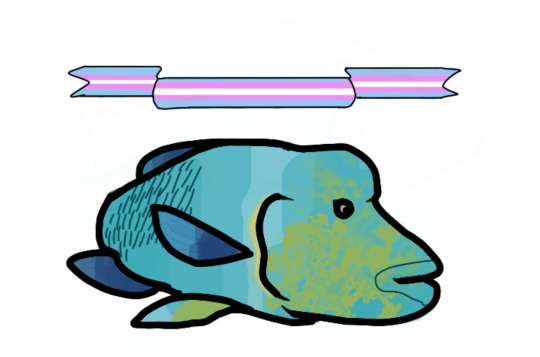
Day 3 of fishuary- wrasse
Napoleon wrasse + trans flag
For the ftm kings
@fish-daily
103 notes
·
View notes
Text
Today is Wet Beast Wednesday!
Today's wet beast is: Napoleon Wrasse

Olive's Wet Beast Fact: also called the Humphead Wrasse or Napoleonfish, this fish can rotate it's creepy-ass eyes 360°
Stay tuned for more Wet Beast Wednesdays!
#napoleon wrasse#Napoleonfish#humphead wrasse#marine biology#wet beast wednesday#aquarium#fish#sea animals#ocean aesthetic#oceancore#ocean#sea creatures#my photo#oceanposting#zoology
598 notes
·
View notes
Text
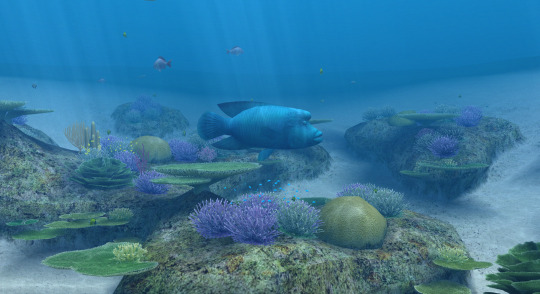
Lagoon - Manoa Lai Main
Endless Ocean, Nintendo Wii
these guys have a chance of their routes completely breaking and clipping through the floor never to return, i believe in either winter or spring in the lagoon?
what a special game...
#endless ocean#endlessocean#forever blue#endlessoceanphotos#nintendo wii#wii#humphead wrasse#napoleon wrasse#manoa lai
4 notes
·
View notes
Text

The International Plastic Bag Free Day 2023 國際無塑膠日
HEY HUMAN, SEE WHAT YOU DO!?
ANIMAN - PLASTIC FISH
Instagram: milkdongcomics
Facebook: Milk DoNg Comics
#The International Plastic Bag Free Day#國際無塑膠日#Humphead Wrasse#Maori Wrasse#Napoleon Wrasse#曲紋唇魚#蘇眉魚#龍王鯛#拿破崙魚#Plastic Pollution#塑膠污染#Ocean Pollution#海洋污染#ANIMAN#HEY HUMAN SEE WHAT YOU DO!?#Milk DoNg#Milk DoNg Comics#Art#Drawing#Sketching#Painting#Illustration#Character Design#Color Pencil
2 notes
·
View notes
Text

1 note
·
View note
Text


Shrink plastic charm test :)
Just gotta get UV resin and it'll look pretty snazzy!
11 notes
·
View notes
Text
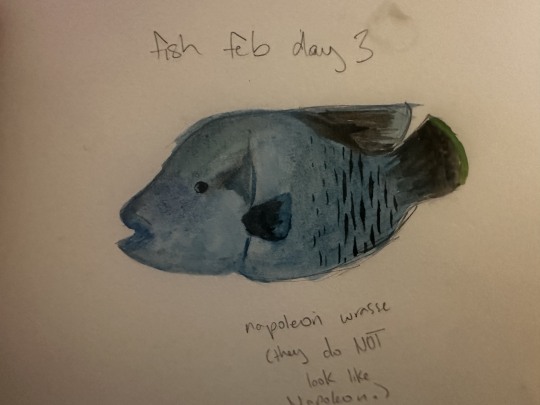
fishuary day 3: wrasse
5 notes
·
View notes
Photo

Humphead Wrasse painting study
A fish born female & occasionally turns male w/ age
They are protogynous hermaphrodites, so sometimes a female will become a male, and turn from a female’s rusty red-orange colors to a male’s bright blue-green colors. - src Florida Museum
#Humphead Wrasse#Napoleon fish#digital painting#art#study painting#nature#fish#artofyorugami#yorugami
28 notes
·
View notes
Note
Hi! what are your top 5 most smooch-able animals?
5- The Napoleon Wrasse Fish:
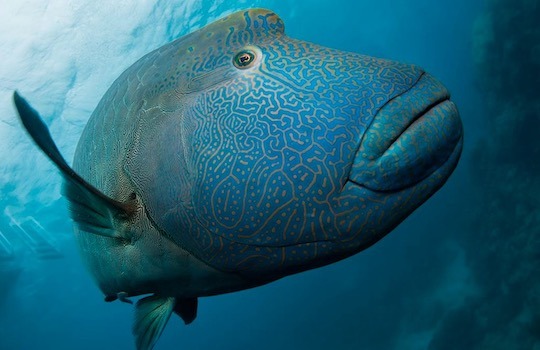
4- The Longer Grand Anteater:
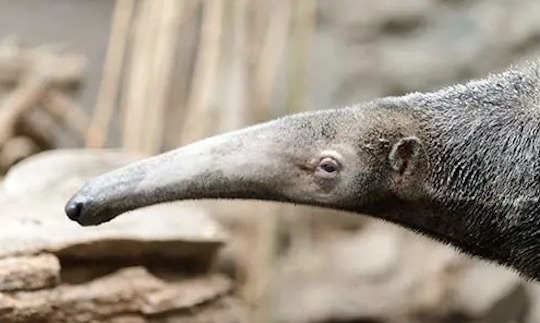
3- The Spatula-Beaked Frencher:
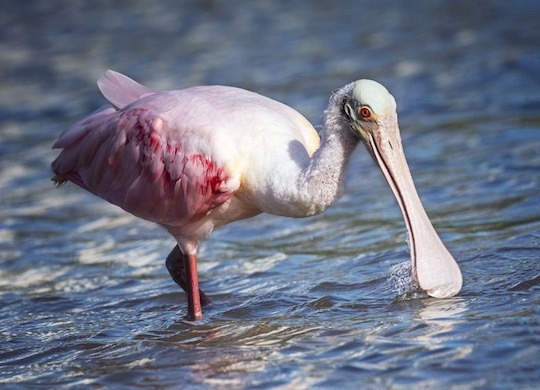
2- The Northern Pfeiffer-Lipped Pinniped:

1- The Recursive Brim Hippo:

191 notes
·
View notes
Text

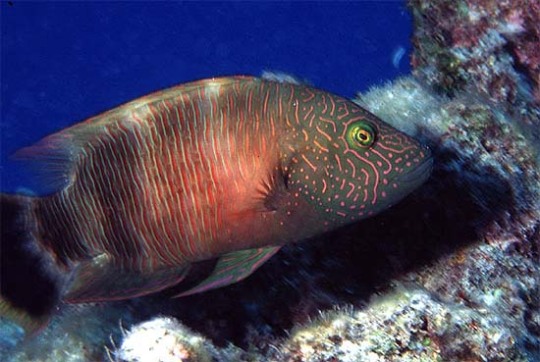
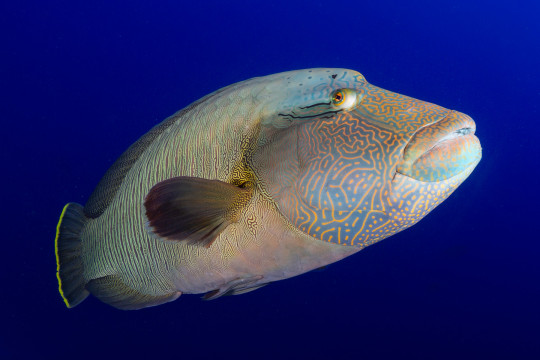
Let's Hear it for the Humphead Wrasse
The humphead wrasse, Cheilinus undulatus, is also known as the Māori wrasse, Napoleon wrasse, or the blue- tooth grouper. They can usually be found around coral reefs and steep rocky cliffs in the Indo-Pacific, particularly on the east coast of Africa, the west coast of India, and the tropical waters of southeast Asia and the Great Barrier Reef.
The Māori wrasse gets its name from the distinctive markings that adults carry. Males are blue-green or purple, while females are more often red or orange. Both have unique patterns of lines and dots covering their heads, and stripes running down the rest of their body; early researchers compared the patterns on their heads to the tattoos traditionally used by the Māori people. In addition to its striking coloration, C. undulatus is also known for being the largest member of the wrasse family. Males can reach up to 2 m (6.5 ft) long and weigh up to 180 kg (396 lbs), while females tend to be smaller. Males also have a large 'hump' on their foreheads, hence the name humphead wrasse.
Another feature of note in C. undulatus is the set of large teeth fused into a parrot-like beak. They use this beak to predate upon hard-shelled animals like mollusks, urchins, sea stars, and crustaceans. On occasion, they also feed on smaller fish and moray eels. Due to their size, adults have very few natural predators aside from sharks, but larvae and small juveniles are more often opportunistically hunted by other fish.
Like many coral reef fish, the humphead wrasse is a protogynous hermaphrodite. This means that most individuals begin life as a female, and become male later in life-- known as 'super males', they are larger than males who did not transition. Individuals first become sexually mature at 5-7 years old, and females begin transitioning to male at 9-12 years old. Spawning occurs a few times a year, and during this period over a hundred adults can congregate in an area. The female releases about 20 eggs into the water column, where they are fertilized by her chosen partner. Three to four weeks later, the eggs hatch and the larvae migrate to the nearby reef.
Conservation status: C. undulatus is considered Endangered by the IUCN. Populations have declined due to overfishing and by-catch mortalities, loss of their food sources, habitat destruction, and capture of juveniles for the aquarium trade.
If you send me proof that you’ve made a donation to UNRWA or another organization benefiting Palestinians– including esim donations– I’ll make art of any animal of your choosing.
Photos
Andrew J. Green
Lluís Masuet
George Ryschkewitsch
#humphead wrasse#Labriformes#Labridae#wrasses#ray-finned fish#bony fish#fish#marine fauna#marine fish#coral reefs#coral reef fish#indian ocean#Pacific Ocean#indo-pacific#animal facts#biology#zoology#ecology
102 notes
·
View notes
Text
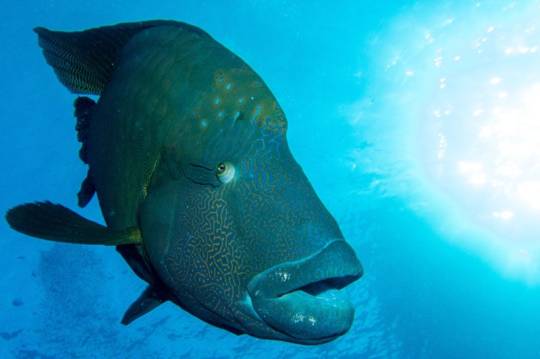
Rating: Cute!
This Napoleon is often called a Napoleon Wrasse! They are big, they are chubby, they have the calory count of a saltine cracker! He's very cute and very healthy!
178 notes
·
View notes
Text
Fish of the Day
Today's fish of the day is the Humphead Wrasse! Thank you Three for the suggestion!
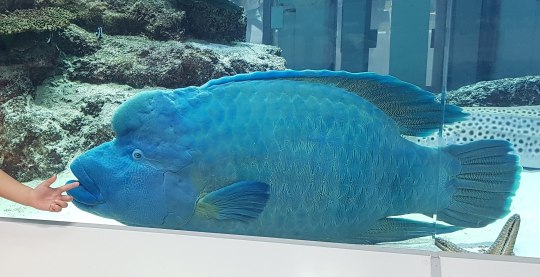
The humphead wrasse, also known as the Māori wrasse, Napoleon wrasse, and Napoleon fish, scientific name Cheilinus undulatus is an endangered fish found around coral reefs. Primarily found in the indo-Pacific ocean, their range stretches from the Eastern side of Africa to as far East as the islands of Oceania. Other populations live in lagoons, estuteries, and the red sea, thriving on the reefs within. Juveniles prefer to live on sandy banks, closer to the surface, but fully mature wrasse prefer to live a bit deeper in the waters. Anywhere from 3-350ft into the depth of the water, where offshore corals thrive.
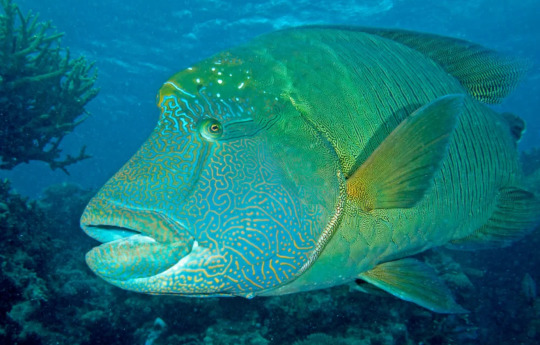
The diet of the humphead wrasse consists of mollusks, crustaceans, urchins, and smaller fish. But, the most impressive thing about their diet is the ability to eat toxic animals. More importantly, their ability to eat crown-of-thorns starfish, which are a common reason for disease in coral reef systems, as these starfish eat coral at a faster rate then they can grow in natural condition and the recent surge in population is one of the larger reasons for coral loss. The wrasse's ability to eat these is essential to their home ecosystem. Their diet can also support their large size, with females only getting as large as a meter, but males coming in as large as 2 meters (a little larger than 6 feet). Predated by sharks, but one of their main issues, and cause for endangerment is due to overfishing by humans, along with illegal aquarium trading. This combined with habitat loss is what makes it so important we watch their numbers closely.

Reproduction of the humphead wrasse is much like that of others in the wrasse family. Wrasse are protogynous hermaphrodites, meaning that they can switch sexes throughout their lives, although the timing behind sex change is still unknown. All humphead wrasse are born female, and most switch to male at about 9 years old. Spawning will take place at reef edges, and eggs will rest on or near coral until hatching. The first 5-7 year of their lives juvenile, but after they will choose sex based on the population needs of their reef, and live another 30-40 years before dying.
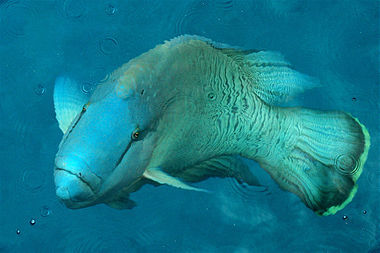
Have a wonderful day, everyone!
#fish#fish of the day#fishblr#fishposting#aquatic biology#marine biology#animal facts#animal#animals#fishes#informative#education#aquatic#aquatic life#nature#ocean#humphead wrasse#wrasse#Cheilinus undulatus#reef#coral reef#indo-pacific
17 notes
·
View notes
Text
!Trigger Warning! (Talk of Animal Death ahead)
I received some devastating news today from my co-workers. My favorite fish at the Aquarium I work at died last night. Our Napoleon Wrasse (aka Humphead Wrasse) aged 26, was bitten by one of the younger sharks in the tank, which started a feeding frenzy for all of the other sharks. This is a very sad time time for me, but unfortunately, these things do happen.
I'm going to miss you, Dynamite. Rest easy.

#napoleon wrasse#cw animal violence#I'm so sad he was my favorite fish#tw animal death#marine biology#my photo#aquarium#fishblr#humphead wrasse
65 notes
·
View notes
Text
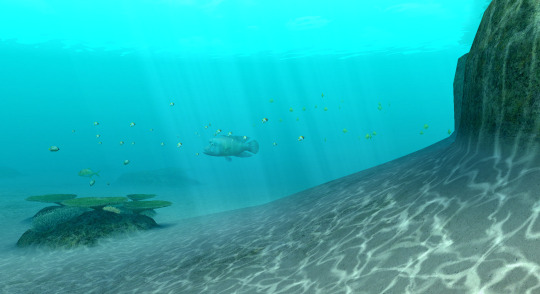
Cake Rock - Gatama Atoll
Endless Ocean: Blue World, Nintendo Wii
the glow-up for the humphead wrasse in this series is inspiring...
#endless ocean#endlessocean#forever blue#endless ocean 2#endless ocean blue world#forever blue 2#endlessoceanphotos#nintendo wii#wii#humphead wrasse#napoleon wrasse#gatama atoll
3 notes
·
View notes
Text

HEY HUMAN, SEE WHAT YOU DO!?
ANIMAN - PLASTIC FISH
Instagram: milkdongcomics
Facebook: Milk DoNg Comics
#Humphead Wrasse#Maori Wrasse#Napoleon Wrasse#曲紋唇魚#蘇眉魚#龍王鯛#拿破崙魚#Plastic Pollution#塑膠污染#Ocean Pollution#海洋污染#ANIMAN#HEY HUMAN SEE WHAT YOU DO!?#Milk DoNg#Milk DoNg Comics#Art#Drawing#Sketching#Painting#Illustration#Character Design#Color Pencil
4 notes
·
View notes
Text
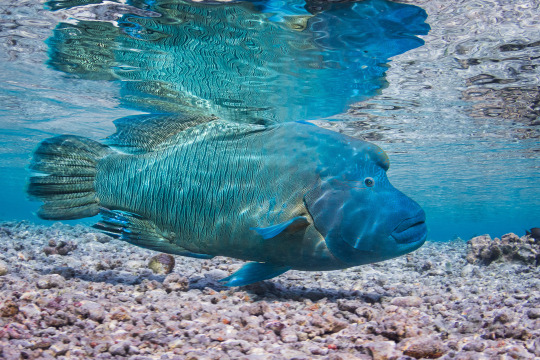
Napoleon wrasse in Fakarava, French Polynesia. Photo by Todd Aki.
47 notes
·
View notes